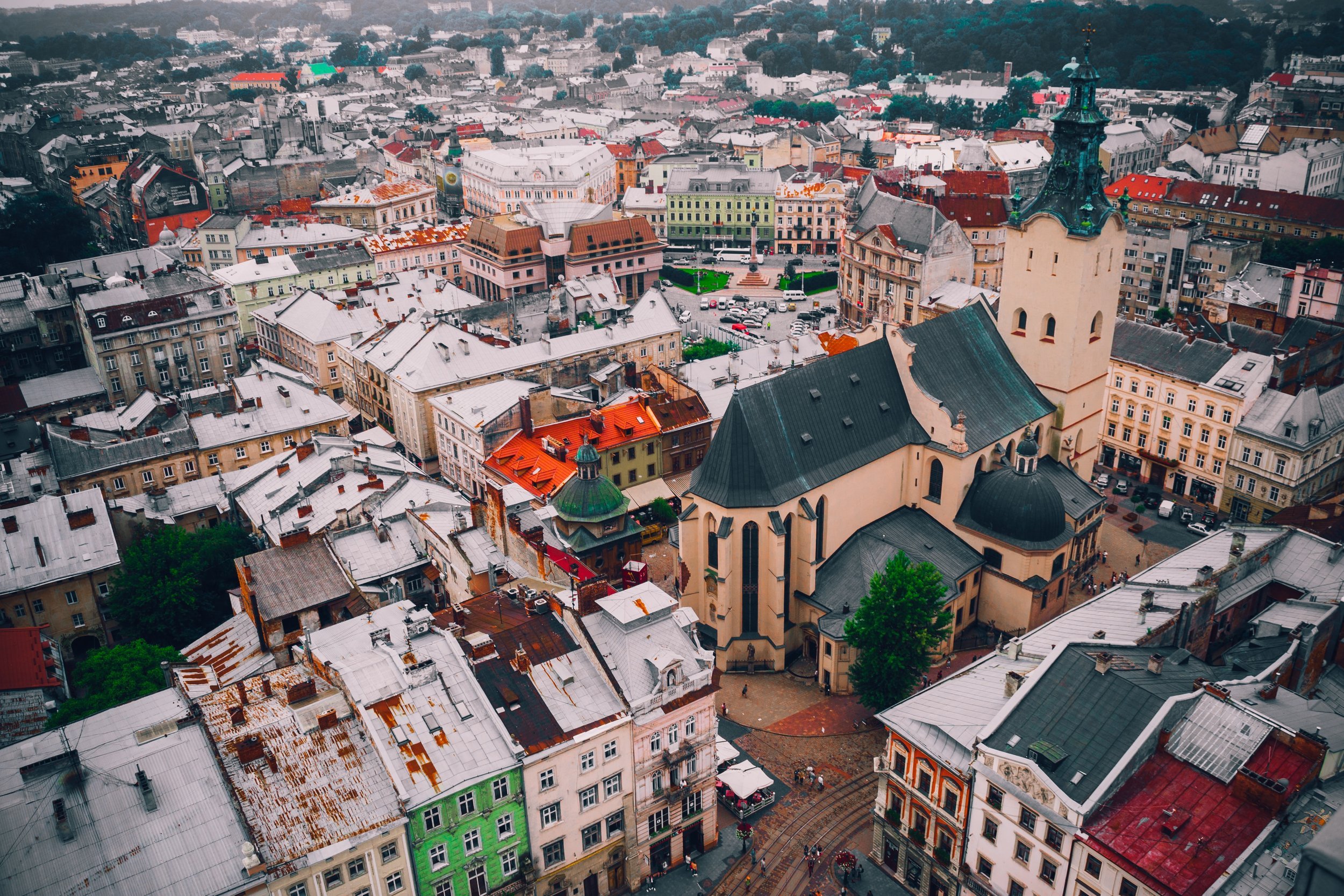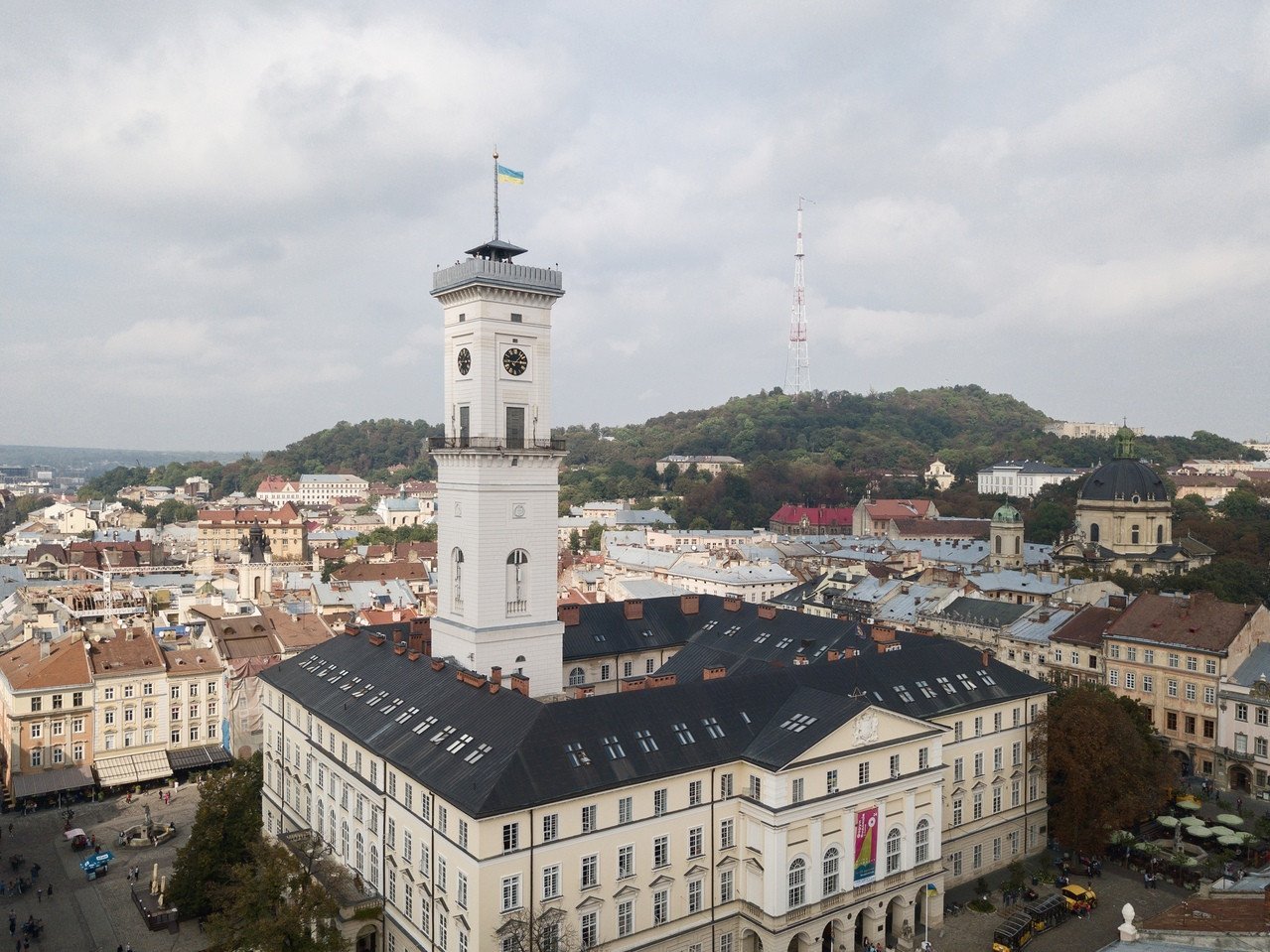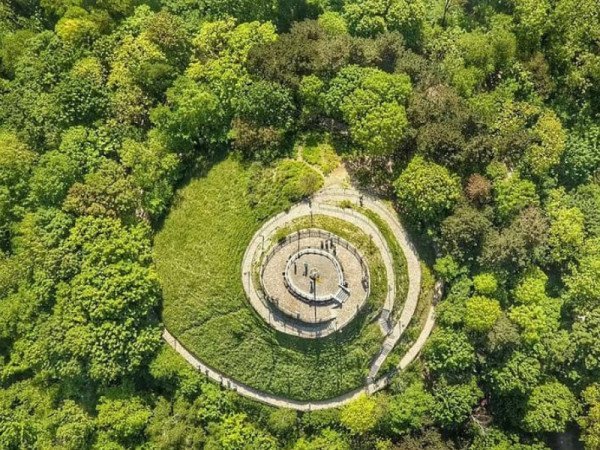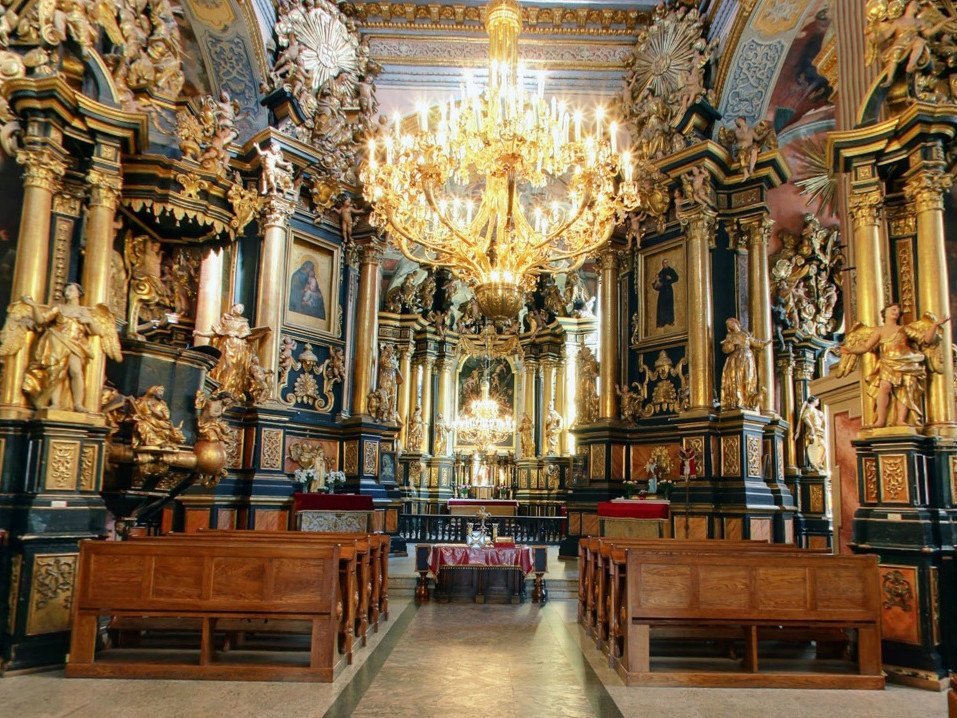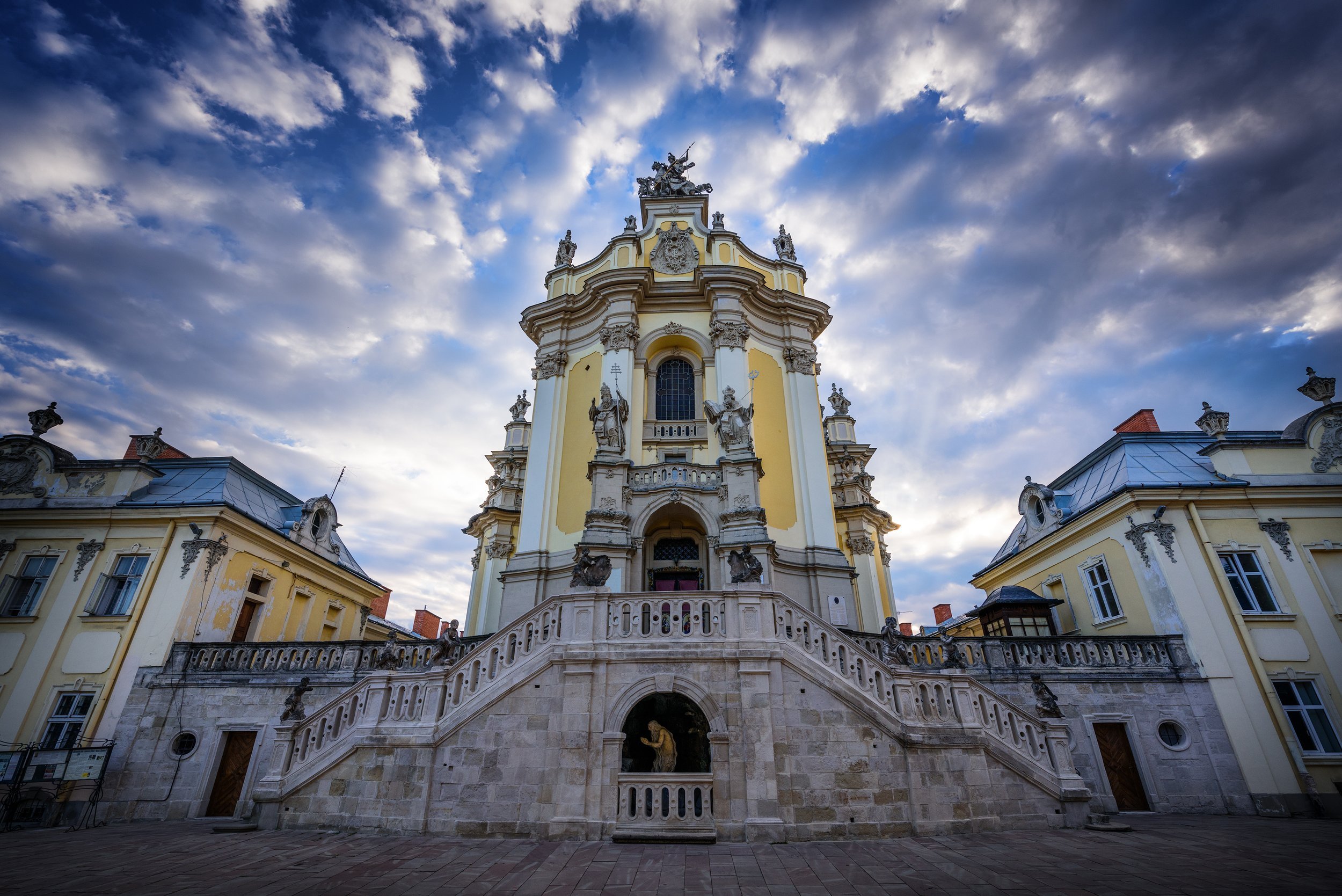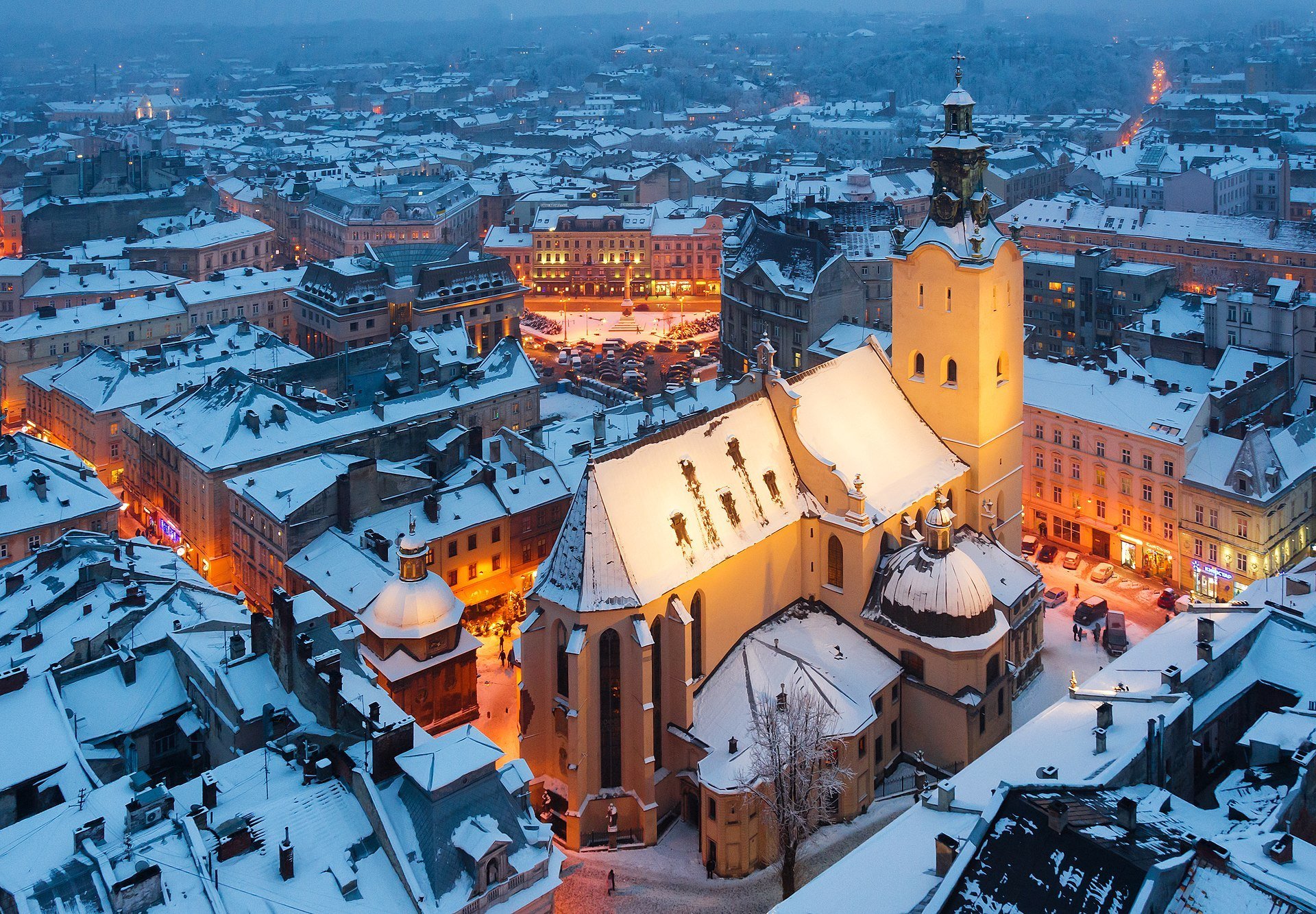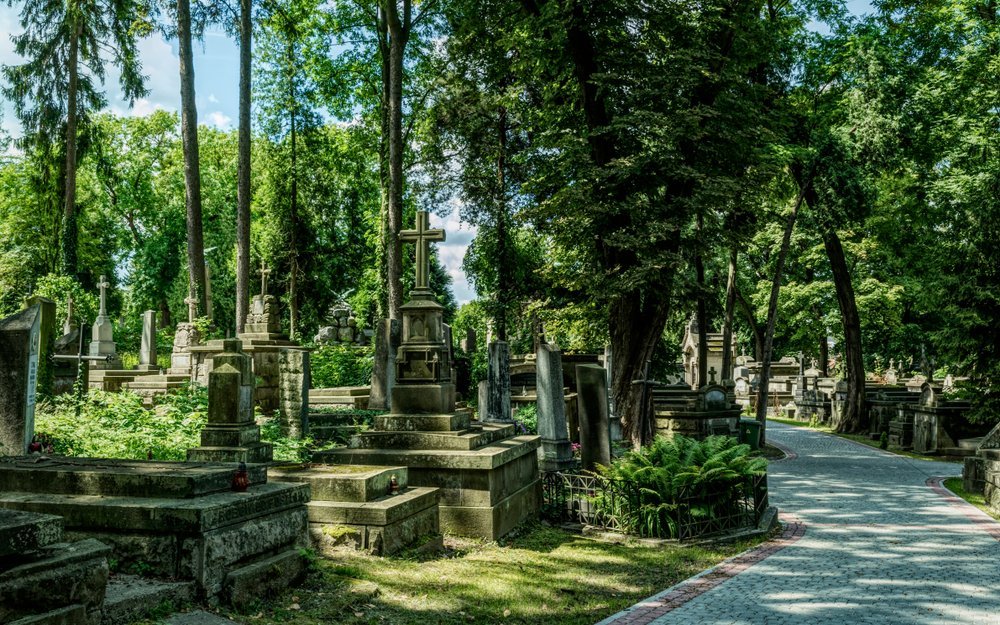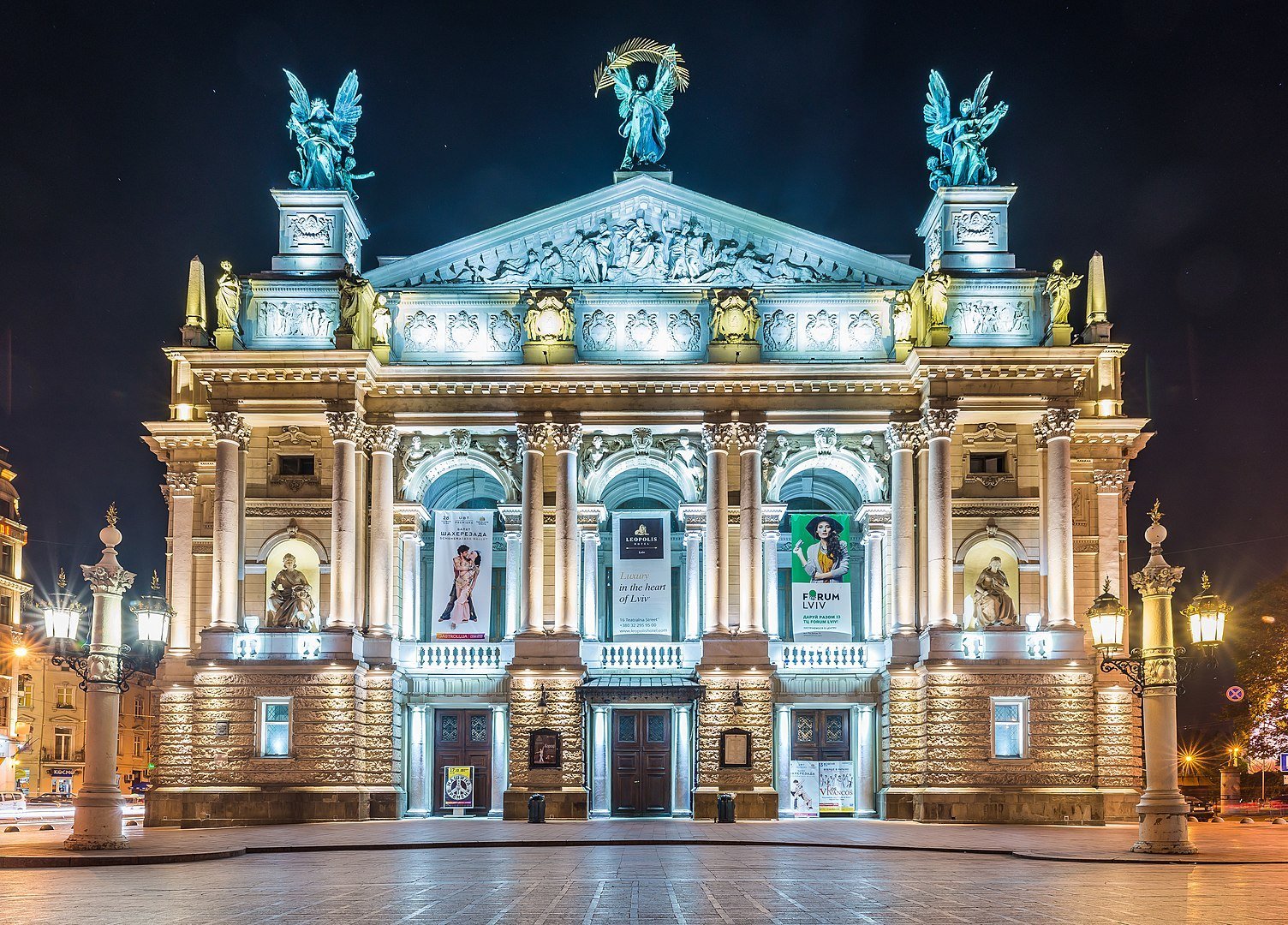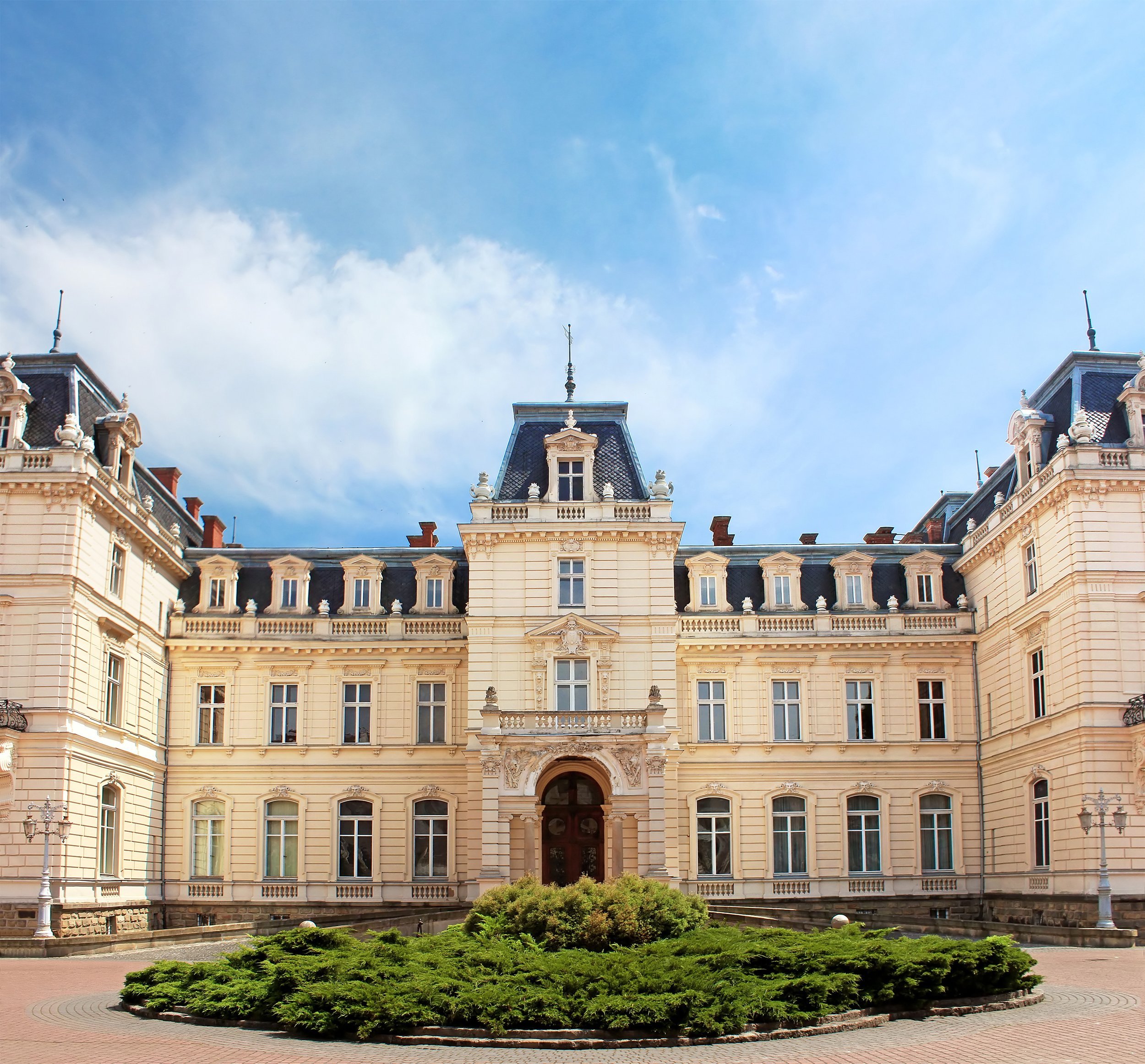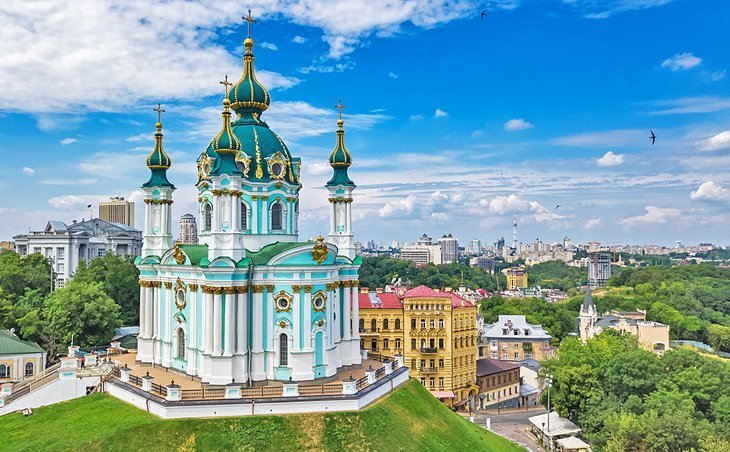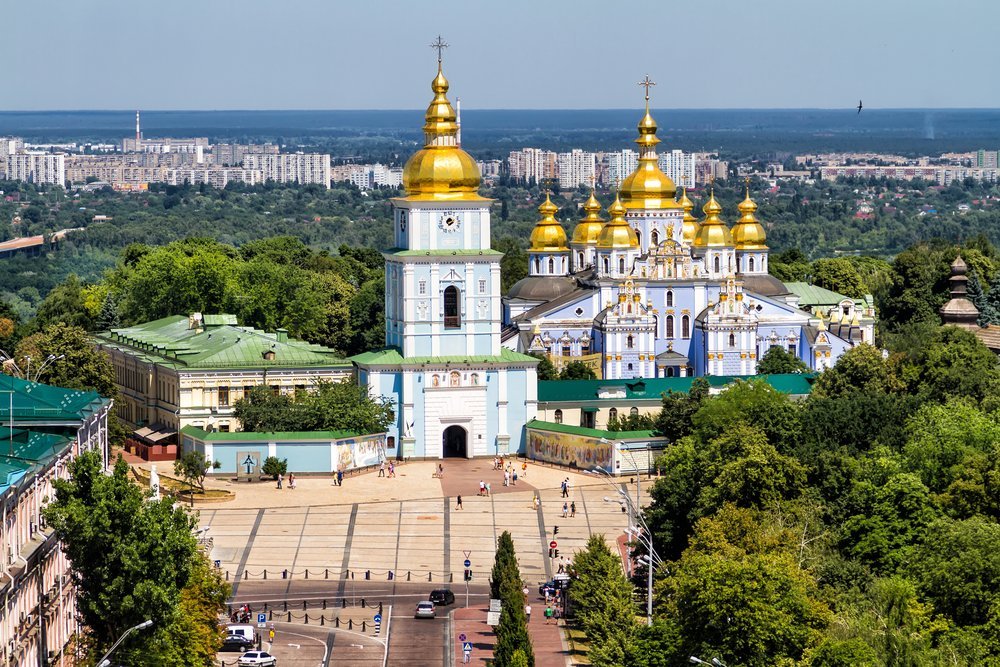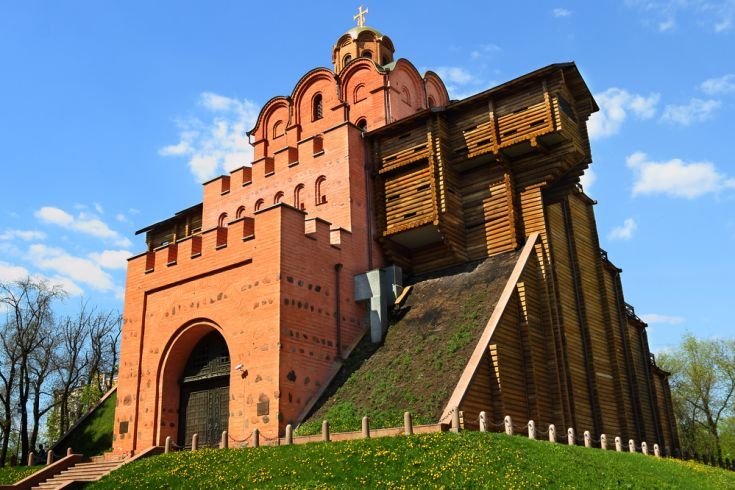My Ukraine Bucket List
By Heather Bolen
Dzharylhach Island, an uninhabited island located in Karkinit Bay, a bay of the Black Sea, in South Ukraine. The lighthouse was designed by Gustave Eiffel—the same Gustave Eiffel of the Eiffel Tower. Image source: Jet Set Together
Other than a long layover in Kyiv a few years back, I've never been to Ukraine.
I hope to visit one day. It's an incredibly historic country with breathtaking natural landscapes and dazzling architecture.
There are many ways to help the people of Ukraine during this time of war, and one of them will be adding tourist dollars to their economy once the war is over. In the meantime, perhaps we can honor Ukraine by educating ourselves on its history and culture.
I did a little research and put together my personal Ukraine bucket list. This list is by no means exhaustive. I limited myself to seven destinations, but there is so much more!
Perhaps you'll be inspired to visit one day too.
|1| lviv
Lviv, Ukraine. Image source: Andriyko Podilnyk via Unsplash
It was a major toss-up between Lviv and Kyiv for my #1 spot.
In the end, I’m embracing my nerdier side and going with Lviv. Lviv is home to the oldest university in Ukraine, established in 1784 by the emperor of Austria Joseph II with Latin as the language of instruction. The city is the cultural capital of the country—incredibly
charming and just an hour’s drive from the Polish border—with a history tracing back to 1240.
There are plenty of museums and historical landmarks to take in, but, from what I’ve read, the public squares and cozy ancient courtyards are genuine architectural masterpieces and the place to go for a coffee or beer to really soak up the culture. At the heart of the city is Rynok Square, planned all the way back in the second half of the 13th century, during the reign of Prince Leo I of Galicia.
Or, take a walk through the historic, 18th-century Lychakiv Cemetery. It covers the territory of 40 hectares with tens of thousands of monuments and over 300,000 graves. Sounds creepy, but the landscape and gardens are stunning. It’s older than Père Lachaise Cemetery in Paris and London’s Highgate Cemetery. After the Russian invasion of Ukraine in 2014, a new cemetery for the Ukrainian heroes who died on the eastern front was created.
There are two must-do climbs to get a view of this beautiful city: Lviv Town Hall Observation Deck and the ruins of High Castle.
As for the monuments, looks like the Lviv Theater of Opera and Ballet, an architectural gem that the city inherited from the Habsburg Empire, and Potocki Palace, in the French Neorenaissance style of the late 19th century.
On my personal must-see list are several historic churches: Bernardine Monastery & Church of St. Andrew (Baroque, 15th-18th centuries), Saint George’s Cathedral (Rococo, 1744-1760), and Cathedral Basilica of the Assumption (Gothic, 1405).
|2| Kyiv
The Motherland Monument is one of the visiting cards of Kyiv. The sculpture is a part of the National Museum of the History of Ukraine in the Second World War and symbolizes the feat accomplished by people during the war. Image source: Andrii Leonov via Unsplash
Kyiv is the largest city in Ukraine and the actual capital of the country. The city stands on the Dnieper River and is a bustling port that is home to many high-tech industries, higher education institutions, and historical landmarks.
It was severely damaged during World War II, but by the mid-1950s it had been restored, and in the second half of the 20th century it enjoyed a well-developed economic and cultural life. The independence of Ukraine from the Soviet Union in 1991 renewed Kyiv’s status as a major European capital.
To clear up a confusing matter, many English speakers know the capital as Kiev (pronounced KEE-yev), but we now hear it regularly referred to as Kyiv (pronounced KEE-eve). The former is the Russian spelling and pronunciation, the latter the Ukrainian. The languages are closely related, similar to Spanish and Italian, but are distinct. Ukraine has been campaigning for the Ukrainian spelling and pronunciation since the 1990s, after the collapse of the Soviet Union. .After Russian President Vladimir Putin ordered troops to invade Crimea and other parts of eastern Ukraine in 2014, many Western news outlets started complying. Americans seem to have become aware of the change only with the 2022 Russian invasion.
Kyiv is also the historical capital of Ukraine. The traditionally recognized year of Kyiv’s establishment is 482 CE, and in 1982 the city celebrated its 1,500th anniversary. However, archaeological evidence suggests that the city was founded in the 6th or 7th century.
According to the ancient legend, Kyiv was founded by three brothers, Kyi, Schek, and Khoryv, and their sister Lybed, leaders of the Polyanian tribe of the East Slavs, at the end of the 5th and beginning of the 6th centuries. Each established his own settlement on a hill, and these settlements became the town of Kyiv, named for the eldest brother, Kyi.
The Vikings seized Kyiv in the mid-9th century and would eventually make Kyiv the capital and center of the first East Slavic state, Kyivan (Kievan) Rus. The town flourished thanks to its location on the river and at the intersection of international trade routes. It became the largest economic and political center in eastern Europe. In 988 the introduction of Christianity to Kyiv enhanced its significance as the spiritual center of Rus. By the 12th century, according to the chronicles, the city’s wealth and religious importance were attested to by its more than 400 churches.
Topping everyone’s Ukraine bucket list, mine included, is a collection of religious monuments that decorate Kyiv’s skyline.
Saint-Sophia Cathedral is one of seven UNESCO World Heritage Sites in Ukraine. It was constructed in 1037 and is named for Hagia Sophia in Istanbul Along with the Golden Gate of Kyiv, Saint Sophia’s is one of the few surviving buildings of the Kyivan Rus’ time and one of the most important Christian shrines in Western Europe—the historical center of Kyiv Metropolis. It is also a monument of Ukrainian architecture and monumental painting of the second decade of the 11th (1011–1018), having the biggest preserved collection of mosaics and frescoes of that period.
St. Michael’s Golden-Domed Monastery is located a short five-minute walk, opposite Saint-Sophia Cathedral. The original, built by Prince Sviatopolk in 1108, was destroyed by the Soviet regime in the 1930s for having “no historical value.” It was reconstructed and opened in 1999 following Ukrainian independence in 1991 and has been the headquarters of the Orthodox Church of Ukraine since December 2018.
A sobering reminder of Stalin’s inhumane policies stands to the right as you exit the church grounds. This is a monument to the victims of Holodomor (starvation): A famine orchestrated in part by the Soviet leadership in an attempt to squash the peasantry, as many as 10 million Ukrainians perished from 1932-33.
Kyiv Pechersk Lavra (also known as Kiev Monastery of the Caves), also a UNESCO World Heritage Site, is a monastic complex famed for its buried monks, spiritual atmosphere, and unique underground caves. The architectural ensemble of Kyiv-Pechersk Lavra comprises unique surface and underground churches from the 11th to the 19th centuries, in a complex of labyrinthine caves that expands more than 600m, as well as domestic and household buildings from the 17th to the 19th centuries. For centuries, the Kyiv-Pechersk Monastery, with relics of saints buried in caves, has been one of the most important Christian pilgrimage centers in the world.
Lastly, situated high on a hill for all to see, St. Andrew’s Church (1747-1762) was built in the Baroque style by the famous architect F.-B. Rastrelli. Largely still intact, it is an unsurpassed example of the Orthodox church interior of the Baroque style. While the church is no longer religious in nature, it does house an important collection of paintings and sculptures.
|3| The Pink Lakes of Ukraine
Henichesk Lake, one of dozens of pink lakes in Ukraine. Image source: Jet Set Together
There are dozens of pink lakes in Ukraine, most of which are located in the Kherson region and easy to get to from Odessa.
The bright pink color comes from a type of algae attracted to the high salt content of the lake. This is one of the only living organisms that’s able to survive in a concentrated salt solution. During hotter temperatures, the color of these lakes becomes even richer. These pink lakes contain both mud and salt that offer different kinds of healing properties.
Lemurian Lake is the most popular, partly because it is the most accessible. Lemurian Lake came to be after the 1970’s, when a military plane full of ammunition crashed into the area where the lake is now, creating a 40-meter hole eventually filled with pink water. After this crash occurred, rescuers went on to deepen the funnel to 18 meters wide. They did this in order to collect the remains of the bomber. Once the remains were collected, the funnel was filled with water, which ended up being much saltier than anywhere else in Ukraine.
However, it appears the best pink lake is Henyches’ke Lake, pictured here.
|4| Dzharylhach Island
Located in the Kherson region of Ukraine, Dzharylhach is an uninhabited island in the Black Sea. It is a designated national park with miles of white sandy beaches, crystal clear bays, olive groves, plenty of picturesque lakes, and a few artesian springs. Accessible by ferry, you can sunbathe, swim with dolphins, feed seagulls, admire amazing sunsets, and go kayaking, snorkeling, diving, or deep-sea fishing. It’s also known for its birdwatching.
And, of course, there is the island’s famous lighthouse, designed by Gustave Eiffel— yes, the same Gustave Eiffel of the Eiffel Tower.
|5| Odessa
Odessa National Opera and Ballet Theatre, a French and Italian Baroque masterpiece. Image source: Artem Kniaz via Shutterstock.
If I’ll be in the region to visit the pink lakes of Ukraine and Dzharylhach Island, then it would be a shame to skip Odessa.
Odessa is a Black Sea port city, known for its beaches and 19th-century architecture. From everything I’ve read, a magical day in Odessa starts with morning Potemkin Stairs, then a few hours sunbathing at Lanzheron beach, then lunch and shopping along Derybasivska Street, followed by an evening out at the Odessa National Opera and Ballet.
You can catch an opera for under $5USD, so to miss seeing a performance in this stunning architectural gem, built in Viennese Baroque style in 1887, would be a tragedy of operatic levels. It is the city’s most iconic landmark — the one most often printed on postcards — and a symbol of Odessa’s rich history, dating to when it was the crown jewel of Imperial Russia. At the moment, sadly, it’s literally a scene out of World War II. Barricades blocking the path to the Odessa Opera and Ballet begin three blocks away., including antitank hedgehogs. This won’t save the building from a direct hit, but Odessans are making a statement about how much they consider the theater a national treasure.
Potemkin Stairs, Odessa. Built in the 19th century to give the city direct access to the harbor, these immense stairs are now the most famous symbol of Odessa. Fortunately, the staircase’s length is only an optical illusion: from the bottom, it looks as if they were endless. In fact, there are only 192 steps with ten equal spans. Image source: WikiCommons
|6|Kherson Cliffs
Kherson Cliffs. Image source: Jet Set Together
Wouldn’t a hike here be divine?
Also known as the grand canyon of Ukraine, Kherson Cliffs are also located in Southern Ukraine in the Kherson region on the banks of the Dnipro-Bug Estuary between the villages of Oleksandrivka and Stanislav. The mountains are steep cliffs with vertical slopes, consisting of multi-colored clay. They reach up to 55 meters in height.
|7| Kamianets-Podilskyi
Kamianets-Podilskyi Castle. Image source: WikiCommons
Of course, I had to squeeze a medieval castle into my bucket list. But Kamianets-Podilskyi isn’t just home to an old castle, it also hosts Ukraine’s annual hot air balloon festival. Plus, the city is surrounded by a national park, including a 5-mile walk along Smotrichsky Canyon, which begins in the Kamianets-Podilskyi city and ends in the village of Tsybulivka.
Does it get more picturesque than that?
The town and Kamyanets-Podilsk Castle are really well-preserved, with parts of the castle, as well as the bridge to the castle, dating back to the Middle Ages.
#TravelandCultureSalon
FOLLOW @TRAVELANDCUTLURESALON ON INSTAGRAM


